Estimated reading time: 9 minutes
Disclaimer: I am not a medical doctor and nothing in this article should be taken as medical advice. Please talk to your doctor before using any of the herbs and/or remedies mentioned in this article.
From Familiar Nuisance to Useful Nuance
After a hike through the woods, you may discover that you have burs trapped in your clothes. Though this may seem like an annoyance, it is a sign you have passed by a plant full of nutrients and healing properties—the burdock plant (Arctium lappa). Growing up to 4-9 feet tall with purple flowers blooming in the summertime, this plant can catch you with burs in any season.
A Swiss inventor named George de Mestral passed by the burdock plant in the 1940s and was fascinated with the burs on his clothes and in his dog’s coat. He took a closer look under a microscope and decided to emulate the natural hook-and-latch system to create what is now known as Velcro.
Though the burdock plant is sometimes known as a weed, learning about its benefits might make you reconsider eliminating it from your garden. In fact, you will likely incorporate this power herb into your dietary routine.
This “weed” has edible leaves, roots, stems and seeds. As a part of the Asteraceae family, burdock is related to daisies and chicory. If you are allergic to other plants of the Asteraceae grouping, you may want to avoid burdock.
Want to save this post for later? Click Here to Pin It On Pinterest!
Growing Burdock
The most common types of burdock to plant are the Great burdock or Common burdock.
Great burdock is a large plant that can grow up to 9 ft tall, with solid stalks and flat-topped purple flowers when it blooms. Common burdock is smaller, with hollow stalks and shorter flowers. Both plants can be noticed for their seasonal clumps of purple flowers that dry into the commonly known bur. Burdock is biennial, so it will grow for 2 years before dying.
Often considered a weed, burdock is something you can find in many woods. It self-seeds with the burs carried by passersby, both people and animals. To grow it in your yard, you will likely encounter the same easy spread, especially if you have pets, though that may just mean more plants to harvest.
Burdock grows well in planting zones 2-10. For colder climates, plant in spring once you have passed the chance of frost and for warmer climates, you can plant in fall. Purchasing seeds is your safest option for a healthy plant.
You can harvest them from a wild source, just be sure that you know what plant you are collecting from since there are look-a-like plants like cocklebur. Poisonous belladonna also typically grows near wild burdock, so harvesting wild roots may mean you come up with a contaminated product.
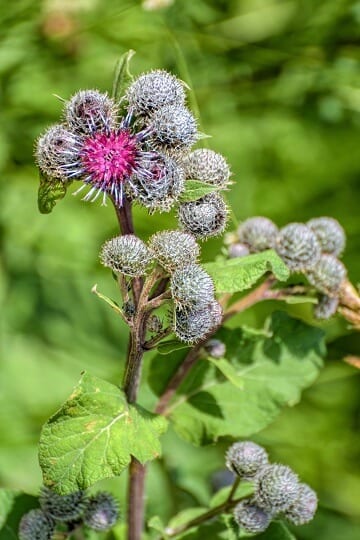

Burdock is a hardy plant, so it will survive most conditions. Try to plant it somewhere you are comfortable with extra plants popping up. You can help control your bounty by pruning flowers before they seed, though it typically takes about two years for flowers to develop. Once the flowers show up, much of the burdock plant will become too bitter to enjoy with the plant energy transferring to the blooms and seeds.
Your burdock plant will thrive with plenty of water and loose soil for deep roots. When it is time to harvest, you may need to dig out deep roots, so consider sand or woodchip additives to your soil to keep things loose. Though the deep dig for burdock roots can be cumbersome, it is this attribute, the deep roots soaking up nutrients from deep soil, that is partially responsible for the nutritional powerhouse.
Nutritional Benefits of Burdock
The leaves, shoots, and roots of the burdock plant are all edible and contain rich nutritional value. Burdock root is used around the world due to the healing and nutritional properties that it offers. Though burdock is commonly used as a food, it is also added to different drinks, tinctures, and other herbal medicine.
A young plant has edible roots without cooking. Simply peel and enjoy a root and it will taste like a crisp parsnip. Some varieties may have a pungent flavor, so you can cook the root to soften the flavor. Shredding the root and soaking it in water helps minimize flavor if you find it to be too bitter or if you are harvesting a more mature tap root. Best time to harvest a burdock root is about 3-4 months after planting, though you can harvest until flowers appear in the second year.
A burdock root can be boiled, roasted, or sautéed similarly to other root vegetables. Burdock roots are loaded with nutritional value making it a plant used around the world. According to the USDA, burdock root provides energy, protein, carbohydrates, fiber, amino acids, and several vitamins. Burdock root is also full of antioxidants.
Though the leaves are also edible, they can be bitter and tough. If you’d like to try eating burdock leaves, keep an eye out for the earliest sprouting of the plant. The younger the leaf, the better the taste. Older leaves can be used to wrap other vegetables and meat to steam or cook over a fire.
Burdock shoots are edible, delicious, and a bit like an artichoke. Harvest the shoots before the flower develops and the stalk becomes hollow. Peel the shoots twice and the inside will become soft and tender to eat once cooked.
Medicinal Properties of Burdock
Burdock is used as an herbal medicine around the world. Burdock root is taken as food, infused in vinegar, made into a tincture, essential oil, dried and powdered for encapsulation, and even made into tea. If you grow burdock, you may want to take advantage of a few of its uses. If you do not want to mess with growing the plant, you can buy several burdock supplements to still take advantage of this plant power.
1. Offers An Immune Boost
The best way to take advantage of the immune-boosting elements of burdock root is to include it in your diet. As a high fiber food, burdock helps the gut stay healthy which is essential for immunity.
It is loaded with vitamins such as vitamin C and B which are both powerhouse vitamins for the immune system. Burdock also contains essential immune minerals like iron and magnesium.
2. Helps Fight and Prevent Cancer
Burdock has been proven to have antioxidants quercetin and luteolin, which may help inhibit cancer from spreading. Burdock also has the lignan, Arctigenin, which has several medical studies proving its aid in slowing and fighting cancer.
3. Diuretic
Burdock root is a natural diuretic that can aid ailments that cause fluid retention. Because of burdock’s diuretic properties, use caution because it can cause dehydration.
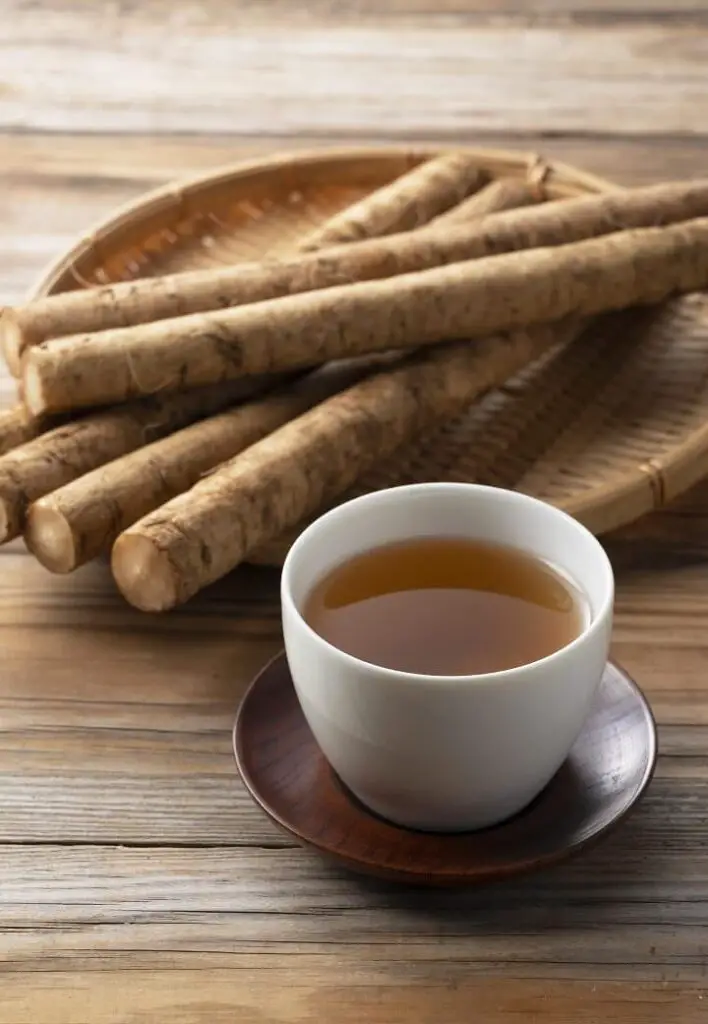
4. Lowers Blood Pressure
Burdock root contains potassium, so adding burdock root to your diet can help you meet your daily potassium needs. There are studies that have shown a correlation to potassium deficiency and high blood pressure. Potassium relaxes the walls of blood vessels helping to lower blood pressure.
5. Promotes Hair Growth and a Healthy Scalp
Make a topical burdock rinse for you scalp to help scalp conditions like dandruff. Hair growth is most effective on a healthy scalp, so this is a great start due to the phytosterols and essential oils in the burdock root. Ingesting burdock root aids in blood flow throughout your body, including your head and scalp, which can help stimulate hair growth.
6. Boosts Memory
There have been several scientific studies, primarily on mice, that suggest some of the compounds within burdock aid in boosting memory and enhancing memory for Alzheimer’s patients.
7. Soothes Cough and Cold
Burdock tea has been used as an expectorant and decongestant for common colds, helping with phlegm and cough. Burdock does have vitamin c that will boost the immune system. Burdock also has anti-bacterial and anti-viral properties that may shorten a sickness.
8. Aids in Digestion
Burdock root contains inulin which acts a prebiotic. Prebiotics aid in digestion and support a healthy colon. Inulin also helps the body absorb vital nutrients and vitamins.
9. Controls Diabetes
Burdock root and tea help to balance and regulate sugar levels. However, if you are taking blood sugar lowering medicine, do not combine it with burdock tea as it may lead to hypoglycemia.
This natural remedy should only be attempted under the guidance of a medical professional. While animal studies have shown this to be an effective treatment, there still needs to be research with human patients to prove effectiveness.
10. Detoxes the Liver
Burdock root is often a companion ingredient in detox teas as it has evidence through rat studies of purifying the liver. Burdock tea can also stimulate the liver, which aids in healing from any liver stressors. If you have ever bought a detox tea from the grocery store, check the ingredients and you will likely find burdock listed.
11. Purifies the Blood
Burdock has been proven to eliminate toxins, purify blood, and improve blood circulation throughout the body.
12. Skin Care
The same study that highlighted the effects of burdock on blood, highlighted that increased blood circulation aided in skin surface recovery from ailments like eczema. Burdock also has anti-inflammatory and antibacterial properties that can help with skin conditions psoriasis and acne when applied to the skin. The antioxidant and phenolic acids in burdock can help minimize aging and wrinkles.
13. Small Injury Help, Joint Pain Relief
Because burdock root has natural anti-inflammatory properties, small injuries will have pain relief and inflammation alleviation. Added to a routine, burdock can also ease inflammation and discomfort from arthritis.
Try Making Burdock Tea At Home
To make burdock tea, dry out some of your burdock root. Unlike most teas, you will not be using the leaves. Your best nutritional and supplement resource from this plant will be the root.
To quick-dry a fresh root, peel the root into small strips and lay them in the sun. Once it appears dry, briefly roast the root pieces until lightly browned.
If you already have some root dried out, simply chop or slice to use for your tea. Small strips work great.
You can add the root to a reusable tea bag or simply pour very hot water on top of loose, chopped, dry roots. Let steep for 3 minutes, or longer if you would like a stronger tea. Add honey or lemon for some added flavor and enhance the nutritional benefits.
Like this post? Don't Forget to Pin It On Pinterest!

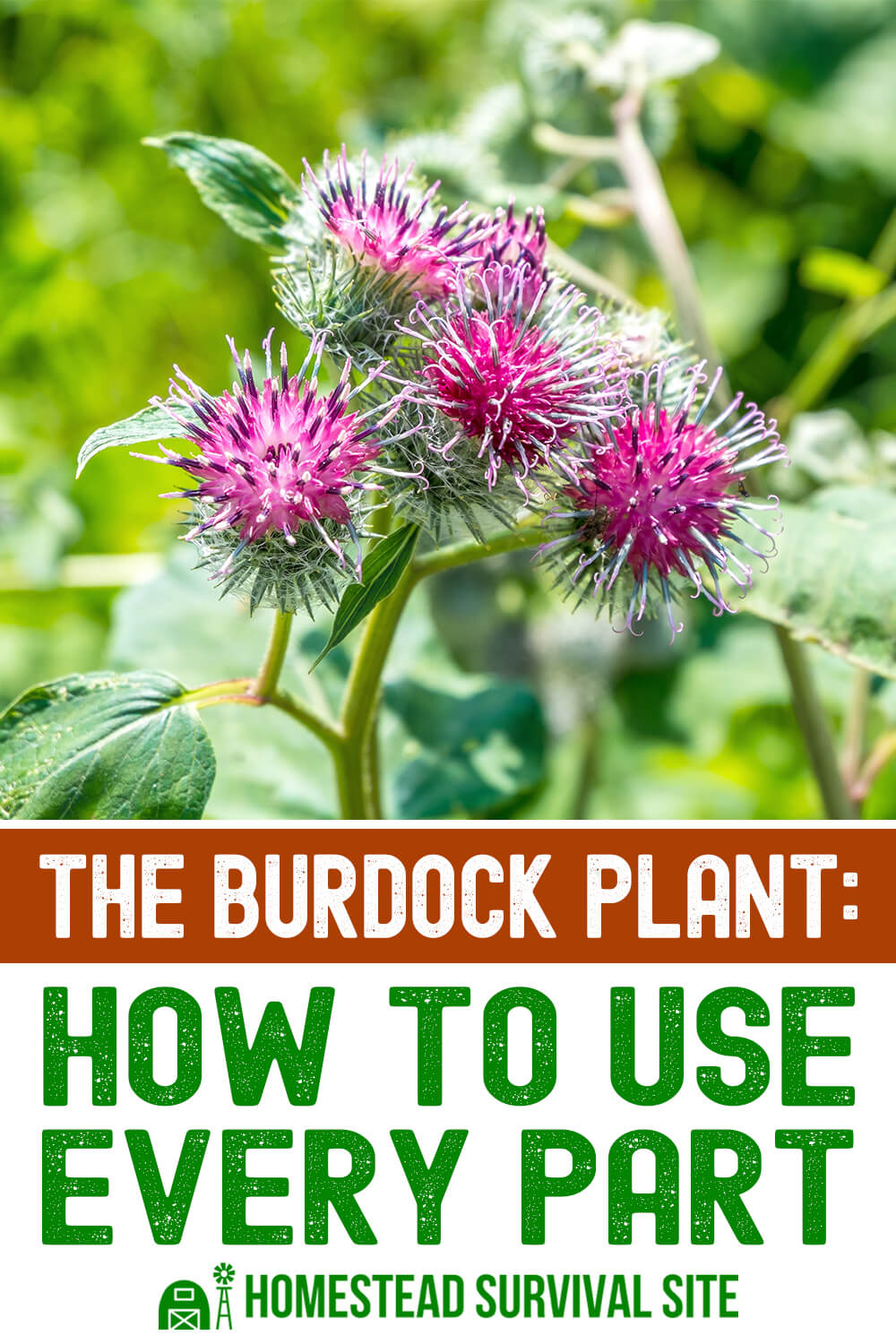


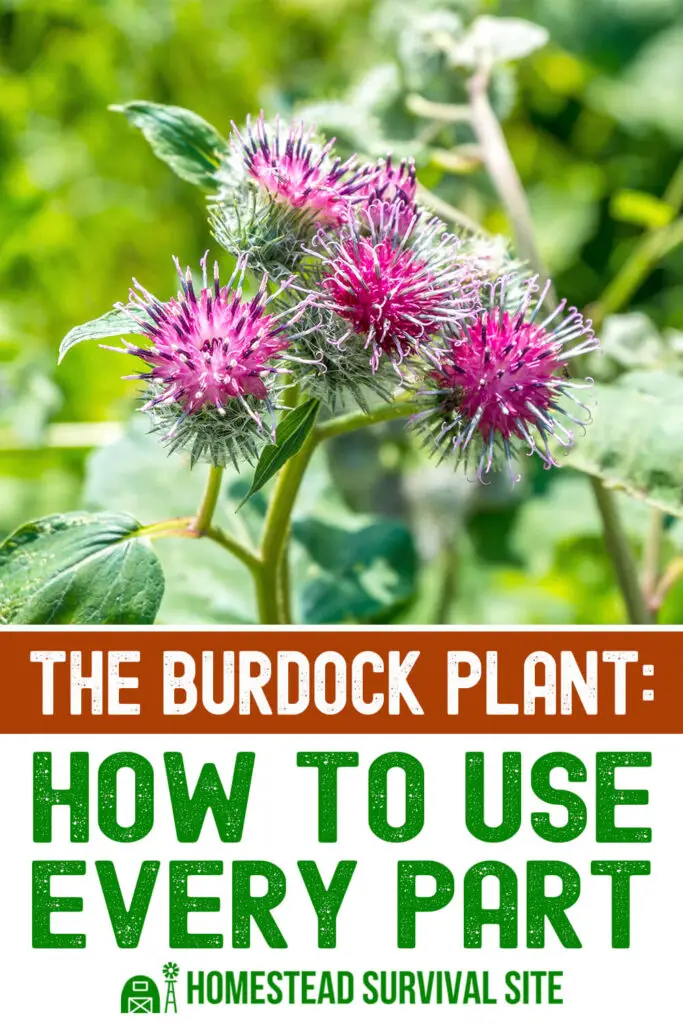


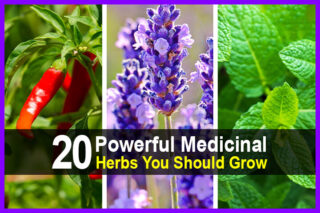
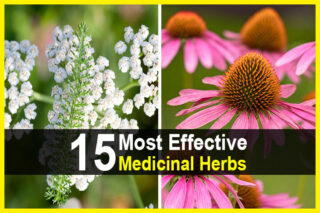
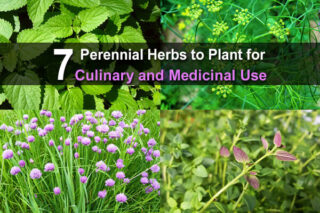



Wow, I had no idea the burdock plant had so many versatile uses – definitely going to try incorporating it into my cooking and skincare routine now!
Isn’t that the picture of a thistle at the beginning of the page?
Hello Mary, I can see why you would say that, as the flowers are quite similar. However if you look at the leaves they are missing the spikes that are found on thistles.